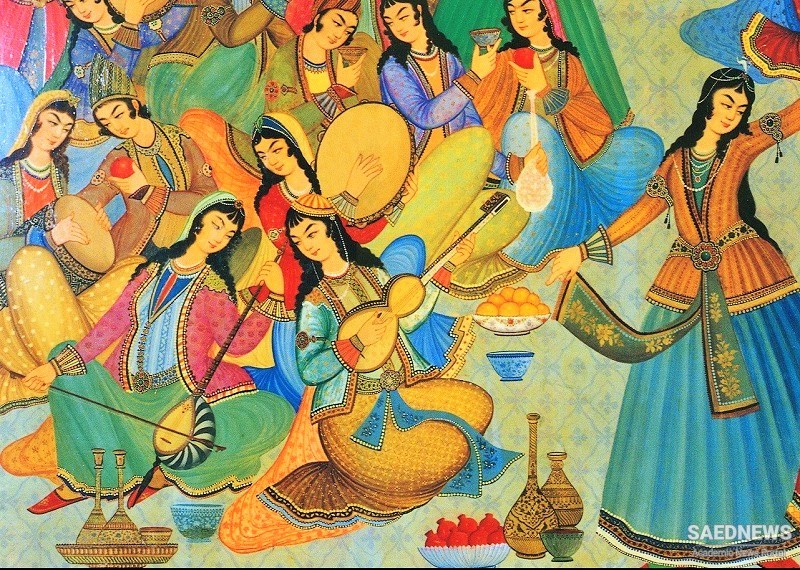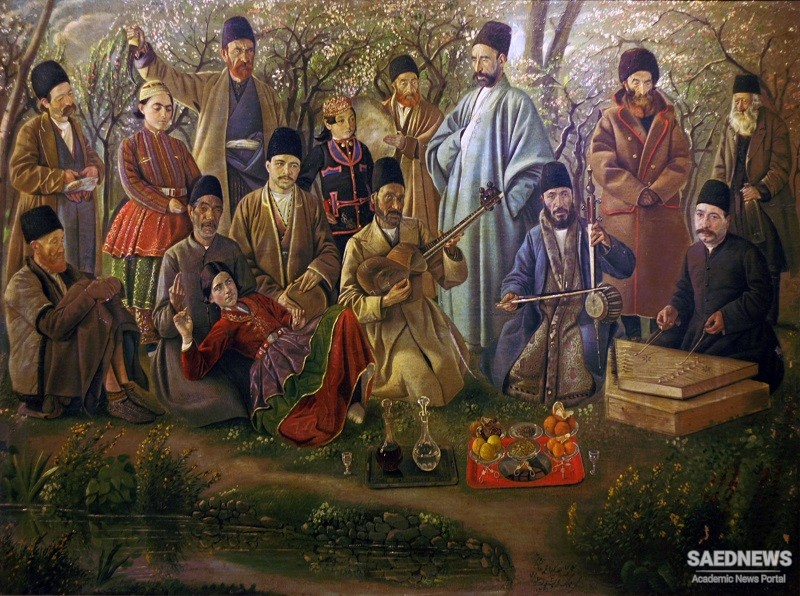Barbad, the court-musician of the great Sasanian king, Khosrow (Chosroes in the Western annals), is said to have invented the Persian system of modes; more likely he introduced modifications to complete and organize them. The musical system consisted of seven Khosravani, thirty modulation forms and three hundred and sixty systems (dastan) which correspond to the days of the week, the month and the year respectively. This is very similar to the Indian idea of “ragas” for different times of day and seasons of the year. The tradition of Persian music embodies twelve modal systems, known as dastgahs. Each dastgah represents a complex of skeletal melodic models on the basis of which a performer produces extemporised pieces. The twelve basic modes consist of seven primary modes (dastgah) and five secondary modes (avaz). The seven main dastgahs, or ‘modes’ are: Shur, Mahur, Homayoun, Se-gah, Chahar-gah, Nava, and Rast Panj-gah (Source: Ismaili Institute of London).



 Persian Cultural Entities Evolve within Islamic Context
Persian Cultural Entities Evolve within Islamic Context














































